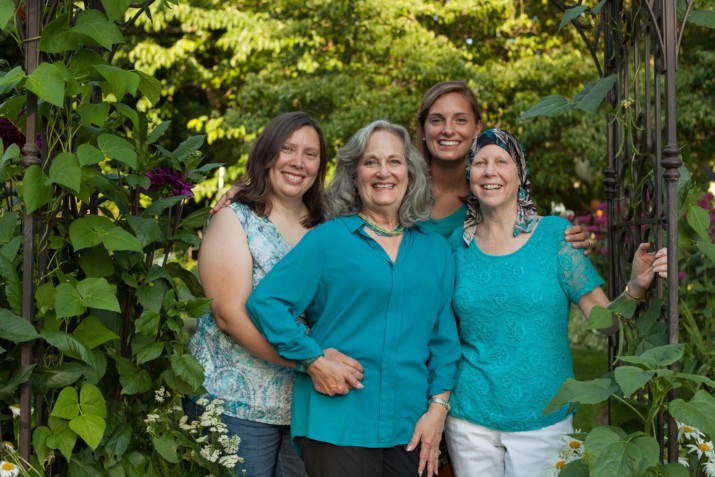Portland, OR. The goal of “National Wear Teal Day” on Friday, September 7th is to raise awareness for ovarian cancer and its symptoms.
Here are symptoms of ovarian cancer:
- Bloating
- Pelvic or abdominal pain
- Difficulty eating or feeling full quickly
- Urinary symptoms (urgency or frequency)
The recommendation for a woman with any of these symptoms is that she see her doctor, preferably a gynecologist, if the symptoms are new and unusual and occur more than 12 times during the course of one month. Experts suggest a combination pelvic/rectal exam, CA 125 blood test, and a transvaginal ultrasound.
There’s a local organization supporting women and their families dealing with ovarian cancer, it’s the Ovarian Cancer Alliance of Oregon and SW Washington. Its big fundraiser is coming up – a night of levity which features a silent auction, a paddle raise and comedy. The 6th annual O-Vary Funny is on FRIDAY (new this year!) October 5th, 2018. Tickets on sale, now.

Ovarian cancer awareness supporters werar teal as they fill the audience of a taping of AM Northwest.
There are many compelling stories about women who advocated for their own health and didn’t stop until they were properly diagnosed. One was written by Yadira Galindo from the University of San Diego about Jo-Anne Lesser.


“Jo-Anne’s symptoms are commonly seen in patients with ovarian cancer, but these are unfortunately considered nonspecific, so they are frequently ignored or attributed to other age-related problems, like constipation, irritable bowel or indigestion, resulting in delayed diagnosis,” said Ramez Eskander, MD, a board-certified gynecologic oncologist who is now treating Lesser. “It is important to educate patients so that they are aware that ovarian cancer is not a silent disease. If patients develop new and persistent symptoms similar to those discussed, they should be evaluated by their physicians and cancer should be considered as a possible cause.” Unfortunately, due to the lack of an effective screening strategy, ovarian cancer is often diagnosed at an advanced stage. Only 20 percent of ovarian cancers are found at an early stage. However, if found early a woman has a 92 percent chance of a five-year survival. “One of the principle issues is that ovarian cancer is not considered as a possible reason for these symptoms,” said Eskander. “This results in a significant delay from the onset of symptoms to diagnosis. Even with early stage disease, 89 percent of women complain of symptoms prior to diagnosis. If we educate families and physicians, we may be able to identify this disease earlier facilitating intervention and treatment.” Approximately 1.3 percent of women will be diagnosed with ovarian cancer in their lifetime. Compared to breast cancer, which affects 12.4 percent of women, that’s not a big number. But according to the National Cancer Institute, the five-year survival rate of women with ovarian cancer is 45.6 percent compared to 89.7 percent for women with a breast malignancy.
For more information, contact http://www.ovariancancerosw.org/.


















thank you for raising awareness about ovarian cancer!